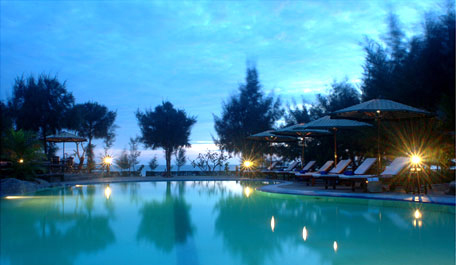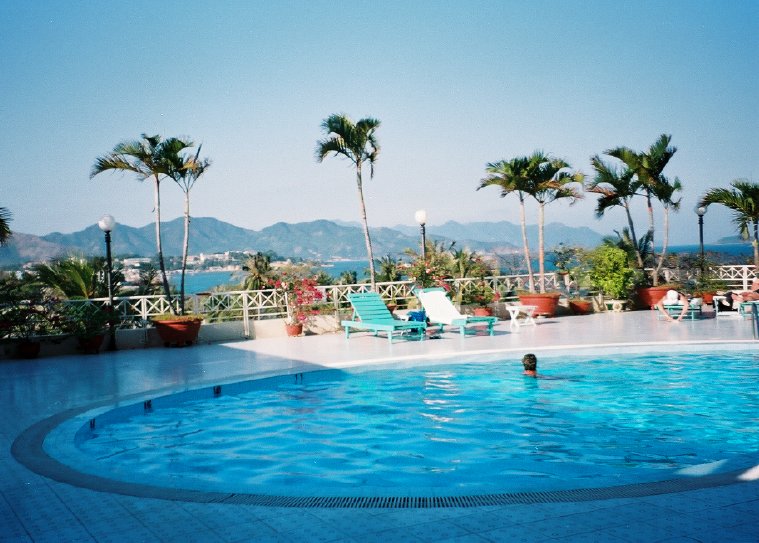INDOCHINA INTERNATIONAL CONSULTING CO., LTD
HO Add: 62L/36 Nguyên Hồng, Ward 11, Bình Thạnh District, HCMC - Vietnam
Biz Office Add: #48 Road No 11, Quarter 6, Hiệp Binh Chánh Ward, Thủ Đức, HCMC - Vietnam
®Source: http://viipip.com should be clearly quoted for any use of information extracted from our website.
Publication permit No: 60/GP-TTĐT , April 05, 2010.


Promising horizon: A corner of HCM City on the bank of the Sai Gon River. With natural advantages of climate, geology, as well as an enthusiastic population of young people, HCM City is projected to become one of the region’s future eco- nomic tigers.
The master plan, submitted by the city’s People’s Committee to the Ministry of Construction last March, runs until 2025, and will see the current HCM City as the nucleus of a HCM City urban zone that will be expanded outside the city limits and the Thu Thiem new urban area.
The master plan calls for more than just extending the city limits on paper, but for massive restructuring and infrastructure development to ease the chaos of the city. Part of the plan includes provisions for four main corridors with major roads and highways to better link the various parts of the city.
As the city works to incorporate the abundance of industries and services sprouting with development, the plan also sets out to try and bring order to the chaos. The plan calls for specialized centres, such as tertiary education and science research centres in Viet Nam National University HCM City area (part of it in Thu Duc District) in the city’s southern urban areas, District 9 and Nha Be, Binh Chanh, Cu Chi and Hoc Mon districts.
Accompanying the growth in industry comes an attached investment in social services. The People’s committee has kept this in mind, with plans for institutions such as hospitals, medical and pharmaceutical research centres to be built in districts 2, 9, 7, and 12 and Thu Duc, Binh Chanh, Binh Tan, Nha Be, Can Gio, Hoc Mon and Cu Chi districts.
Preservation and more
With all the construction projects, some thought has also been put into conservation, as plans call for the preservation of landscapes and historical and architectural heritage, including the current city’s central areas in districts 1 and 3, District 5’s Cho Lon area, and Binh Thanh District’s Ba Chieu area.
To deal with the increasing population, plans call for new blocks to be built with building density in mind, saving land for public services and green space.
The Binh Quoi-Thanh Da urban area should also be developed, according to the plan.
In the additional inlaying areas of the city, the plan gives priority to the development of new large-scale urban and residential areas.
These areas include a 5,000ha science and technology urban area in a part of Thu Duc District and District 9, with plans for a hi-tech park, a National University HCM City park and an ethnic minority cultural and historical park.
A tourism and ecological urban areas in part of Hoc Mon District and District 12 will be set up and several new urban areas in Binh Tan and Binh Chanh districts will be created near industrial parks. Southern urban areas and new residential areas in District 7 will also be expanded.
In the outlying areas, two new large-scale urban areas will be the focus, including the northwest 6,000ha urban area in Cu Chi and Hoc Mon districts and the 1,600ha urban area in Hiep Phuoc Port.
Other new urban areas will be developed in Hoc Mon, Cu Chi, Binh Chanh, and Nha Be districts.
By 2025, the city urban zone will have 52 industrial parks and export processing zones specializing in hi-tech industry.
Details
The detailed proposal for the HCM City urban zone consists of current HCM City and other urban areas in Dong Nai Province’s Bien Hoa City, Nhon Trach and Long Thanh districts; Binh Duong Province’s Thu Dau Mot Town and Di An District; Tay Ninh Province’s Trang Bang District; and Long An Province’s Duc Hoa, Ben Luc and Tan An districts.
In the east, the corridor along the HCM City – Long Thanh – Dau Giay Expressway will link to urban areas in Dong Nai Province’s Bien Hoa City and Long Thanh and Nhon Trach districts.
In the south, the corridor will connect the urban areas along Nguyen Huu Tho Road and Hiep Phuoc Port.
The northwest corridor along National Highway 22 will connect to urban areas in Long An Province’s Duc Hoa District, Tay Ninh Province’s Trang Bang District and Binh Duong Province’s Thu Dau Mot Town.
The south and south-west corridor along Nguyen Van Linh Road will link to Binh Chanh District’s centre and the Tan Kien and southern urban areas.
Urban zone
As part of the plan, the current city’s centre, which consists of districts 1, 2, 3, 4, and 5 and part of Binh Thanh District, and the urban areas in Thu Thiem (737ha) will form the main nucleus of the proposed urban zone to 2025.
Other major centres will also be created in four directions, including an eastern 280ha area along the HCM City – Long Thanh – Dau Giay Expressway in District 9’s Long Truong Ward.
There will also be a northern 300ha centre in the northwest new urban area, a western 200ha centre in the area bounded by National Highway 1 in Binh Chanh District’s Tan Kien Commune, and a southern 98ha one in southern urban areas’ Park A.
The city’s People’s Committee has also proposed a 50ha sub-centre in the north of Hoc Mon District and another, also 50ha, in the south of Nha Be District.
- FDI capital continues to pour into Vietnam (6/11/2025 1:20:33 PM)
- Thanh Hoa receives good news: Preparing to have an additional industrial park of up to 470 hectares, creating jobs for nearly 30,000 people (6/11/2025 1:15:09 PM)
- Industrial Park Real Estate: Waiting for the New Generation of FDI (6/11/2025 1:10:15 PM)
- A wealthy Vietnamese city will have two special economic zones after the merger (6/11/2025 1:04:42 PM)
- 30 billion USD capital FDI in Việt Nam by 2025, a series of "ông big" races to expand the land fund (6/11/2025 12:55:26 PM)
- the 2nd largest city in the North will start construction on an international economic zone (6/11/2025 12:50:20 PM)
- Japanese giant Sumitomo continues to want to build an industrial park in the countrys fourth smallest province. (6/11/2025 12:40:45 PM)
- 3 foreign corporations want to invest billions of dollars in Ba Ria - Vung Tau (6/11/2025 12:34:30 PM)
- Lotte Group member starts construction of nearly 1,000 billion VND logistics center in the province with the most industrial parks in Vietnam (6/11/2025 12:33:26 PM)
- Forming a regional center for manufacturing spare parts and components (6/11/2025 12:24:08 PM)
- Vietnams first wafer factory is about to start construction (6/11/2025 12:19:09 PM)
- Dong Nai attracts foreign investors (6/11/2025 12:13:27 PM)
- Tay Ninhs largest industrial park welcomes a $150 million high-end knitted fabric factory project (6/11/2025 12:11:00 PM)
- (6/11/2025 12:09:10 PM)
- Vietnam will become a destination for Chinese investors in the future (11/6/2023 1:03:19 PM)

- FDI capital continues to pour into Vietnam
- Thanh Hoa receives good news: Preparing to have an additional industrial park of up to 470 hectares, creating jobs for nearly 30,000 people
- Industrial Park Real Estate: Waiting for the New Generation of FDI
- A wealthy Vietnamese city will have two special economic zones after the merger
- 30 billion USD capital FDI in Việt Nam by 2025, a series of "ông big" races to expand the land fund










 ADB: Vietnam’s 2009 GDP growth to be highest in South East Asia
ADB: Vietnam’s 2009 GDP growth to be highest in South East Asia MGM Grand Ho Tram: Vietnam’s First ‘Las Vegas Style’ Integrated Resort
MGM Grand Ho Tram: Vietnam’s First ‘Las Vegas Style’ Integrated Resort Nha Trang’s Twin Towers project licenced
Nha Trang’s Twin Towers project licenced Foreign investors still have good opportunities in Vietnam
Foreign investors still have good opportunities in Vietnam Sierra Wireless gets a foot in Vietnam’s ICT market
Sierra Wireless gets a foot in Vietnam’s ICT market